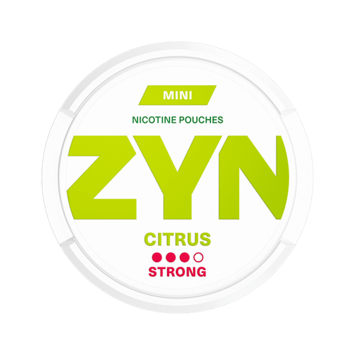What’s the age limit for nicotine pouches?
Philip Plainstein

Nicotine pouches have gained popularity as a tobacco-free alternative for adult smokers seeking to reduce their nicotine intake. These small, discrete sachets contain nicotine and flavourings, offering a modern solution for those looking to manage their nicotine consumption without tobacco. However, understanding the legal age restrictions for purchasing these products is crucial for both consumers and retailers.
In the UK, the current legal age for buying nicotine pouches is not explicitly defined, unlike e-cigarettes, which are restricted to individuals aged 18 and over. This lack of clear regulation has raised concerns among health experts and policymakers, particularly regarding the potential accessibility of these products to young people. The Tobacco and Vapes Bill proposes introducing an age limit of 18 years for nicotine pouches, aligning them with other nicotine products.
Government agencies and health organisations have expressed concerns about the ease of access to nicotine pouches for under-18s. While the products are marketed as a harm-reduction tool for adult smokers, the absence of strict age restrictions poses risks to younger generations. Retailers and consumers must remain vigilant to ensure these products do not fall into the wrong hands.
Introduction to Nicotine Pouches and Age Regulations
Nicotine pouches are small, discreet sachets that contain nicotine and flavourings, designed to be placed between the upper lip and gum. Unlike traditional tobacco products, they do not contain tobacco, making them a popular choice for those seeking alternatives to smoking. These pouches come in various flavours, from mint to fruity options, which has raised concerns about their appeal to younger audiences.
What Are Nicotine Pouches?
Nicotine pouches differ from snus, a traditional Scandinavian product, primarily in composition. While snus includes tobacco, nicotine pouches are tobacco-free, consisting of nicotine, flavourings, and other ingredients. This distinction has led to debates about their regulation and potential risks.
The Significance of Age Regulations
Age regulations are crucial to prevent underage access to nicotine pouches. The lack of clear restrictions has sparked concerns among health experts, who worry about the potential impact on young people. In the UK, while there is no explicit age limit for nicotine pouches, the Tobacco and Vapes Bill proposes aligning their regulation with other nicotine products, such as e-cigarettes, which are restricted to those aged 18 and over.
The absence of strict advertising and packaging regulations has also made these products more appealing to youth. Flavour varieties and attractive designs may attract younger users, highlighting the need for tighter controls to ensure these products are marketed responsibly.
The UK is currently debating how to regulate nicotine pouches effectively. This section has provided an overview of nicotine pouches and the importance of age regulations. In subsequent sections, we will delve into the legal requirements, enforcement challenges, and health risks associated with these products. For more information on the legal framework, visit our terms and conditions page.
Nicotine pouches age limit: Legal Requirements in the UK
In the UK, the legal age for purchasing nicotine pouches remains undefined, creating a regulatory gap. Unlike e-cigarettes, which are restricted to those aged 18 and over, nicotine pouches are not subject to the same legal age requirements. This lack of clear regulation has sparked concerns about their accessibility to young people.
While there is no legally enforced age restriction, most retailers voluntarily adhere to an 18+ policy. However, this voluntary approach leaves room for potential misuse. Research from ASH surveys indicates that about 5% of 18-24-year-olds have tried nicotine pouches, raising concerns about their appeal to younger audiences, especially with their variety of flavours.
The General Products Safety Regulations 2005 provide some oversight, ensuring consumer safety. However, these regulations are not specific to nicotine pouches, leading to ongoing debates about stricter age restrictions. The proposed Tobacco and Vapes Bill aims to align nicotine pouches with other nicotine products, potentially setting the age limit at 18.
| Category | Detail | Status/Impact |
|---|---|---|
| Legal Requirements | No explicit age limit for sale | Voluntary 18+ policy by most retailers |
| Regulatory Concerns | Ease of access for young people | Proposed legislation to set 18+ limit |
| Health Risks | Nicotine exposure risks for youth | Concerns about long-term health impacts |
For more information on the legal status of nicotine pouches, visit our page on where nicotine pouches are illegal.
Current Legal Framework and Regulatory Environment
The UK’s regulatory landscape for nicotine pouches is evolving, with current laws not explicitly setting an age limit for their sale. This creates a notable gap, as e-cigarettes and other nicotine products are restricted to those aged 18 and over. The Tobacco and Vapes Bill proposes aligning nicotine pouches with these products, potentially setting the age limit at 18 to prevent underage access.
Legislation and Consumer Safety
Consumer safety is currently maintained under the General Products Safety Regulations 2005, though these are not specific to nicotine pouches. This lack of specificity has led to debates about the adequacy of protections, especially regarding nicotine levels and product safety. While these regulations ensure some oversight, they are less stringent than those for vaping products, which fall under the Tobacco Products Directive, including restrictions on advertising and packaging.
Recent legislative proposals aim to extend stricter regulations to nicotine pouches. The Tobacco and Vapes Bill is a key initiative, focusing on aligning their regulation with other nicotine products to address public health concerns while supporting innovation.
A balance must be struck between innovation in nicotine products and protecting public health. Nicotine pouches are marketed as a harm-reduction tool, yet their appeal to younger audiences, particularly due to flavour varieties and packaging, raises concerns. This highlights the need for responsible marketing and regulation to ensure these products are accessible only to adults.
Retailers’ Responsibilities and Age Verification Procedures
Retailers play a crucial role in ensuring that nicotine products do not fall into the wrong hands. While the legal age for purchasing nicotine pouches in the UK is currently not explicitly defined, many reputable sellers have voluntarily adopted an 18+ policy to align with other nicotine products like e-cigarettes.
Verifying Buyer Age
Reputable retailers like Evapo have implemented robust age verification processes. These typically involve checking official documents such as passports or driving licences. For online sales, third-party systems like 1account are used to verify the customer’s age instantly. This system cross-references data from credit records, the electoral roll, and other sources to ensure compliance.
Ensuring Compliance with the Law
Failure to comply with age verification laws can result in significant penalties, including fines of up to £2,500. Retailers must ensure that all staff are trained in age verification procedures, such as the Challenge 25 policy, which allows them to request ID from anyone who appears under 25. Additionally, online platforms must integrate age verification at the point of sale to prevent underage purchases.
| Verification Methods | Details | Compliance Steps |
|---|---|---|
| Document Checks | Passports, driving licences | Visual inspection by staff |
| Third-Party Systems | 1account, credit checks | Instant online verification |
| Challenge 25 Policy | Requesting ID for those under 25 | Staff training and implementation |
These procedures not only protect retailers from legal risks but also contribute to broader public health goals by preventing underage access to nicotine products.
Regulatory Loopholes and Enforcement Challenges
The regulatory framework surrounding nicotine pouches in the UK is riddled with loopholes, creating significant challenges for enforcement agencies. While these products are legal, the absence of explicit age restrictions and specific regulations leaves room for misuse and undermines efforts to protect young people.
One major issue is the lack of clear age legislation. Without a defined legal age limit, enforcement relies heavily on voluntary policies adopted by retailers, which are not consistently applied. This gap has led to incidents where products have been sold to underage individuals, as reported by Trading Standards in Oxfordshire, Berkshire, and Dorset. These cases highlight the need for stricter controls to prevent underage access.
Another challenge is the appeal of these products to younger audiences. Aggressive marketing tactics and a variety of flavours can bypass intended consumer protections, making nicotine pouches attractive to children and young people. This is particularly concerning given the potential long-term health impacts associated with nicotine exposure.
“The lack of explicit age legislation and targeted marketing strategies pose significant risks, especially to children and young people.” – Public Health England
Local authorities face additional challenges due to limited resources and the complexity of enforcing regulations without clear guidelines. The government has proposed investing in enforcement measures, but the effectiveness of these initiatives remains to be seen. Until stricter legislation is implemented, the risks associated with nicotine pouches will persist, particularly in the context of their growing popularity and the ease of access for young people.
In conclusion, addressing these regulatory loopholes is crucial to protecting public health, particularly for children and young people. Stricter legislation and more robust enforcement mechanisms are essential to ensure that nicotine pouches are used responsibly and do not contribute to a new generation of nicotine-dependent individuals.
Health Risks and Safety Concerns of Nicotine Pouches
While nicotine pouches are marketed as a harm-reduction tool, they come with significant health risks. Understanding these risks is crucial for consumers and policymakers alike.
Potential Harms of Nicotine
Nicotine, even without tobacco, poses serious health risks. High-strength pouches can lead to nicotine overdose, causing symptoms like nausea, dizziness, and even seizures. Younger users are particularly vulnerable due to their developing brains.
Expert Advice and Medical Warnings
Experts warn that nicotine exposure can harm brain development, which continues until around age 25. Adolescents can become addicted quickly, increasing the risk of future drug addiction. Public Health England states, “Nicotine pouches pose significant risks, especially to children and young people.”
While less harmful than smoking, nicotine pouches aren’t risk-free. They can cause gum irritation, stomach issues, and addiction. Unlike approved nicotine replacement therapies, pouches aren’t regulated as strictly, raising concerns about their safety and effectiveness for quitting smoking.
Research shows that 16% of young people in the U.S. have tried nicotine pouches, with 12% using them regularly. This highlights the need for stricter regulations to protect youth from nicotine’s harmful effects.
Recent Government Proposals and Timeline of Changes
Recent government proposals have set the stage for significant changes in the regulation of nicotine products, including pouches. These developments aim to address concerns around youth access and product safety.
Key Milestones in Regulatory Developments
A key milestone was the introduction of the Tobacco and Vapes Bill to Parliament on 20 March 2024, with its second reading scheduled for 16 April 2024. This bill proposes aligning the regulation of nicotine pouches with other nicotine products, such as vapes, under a unified framework. The government has also announced plans to increase enforcement measures, with an additional £30 million allocated annually to tackle underage and illicit sales.
What the Future May Hold
Looking ahead, the Tobacco and Vapes Bill is expected to introduce stricter regulations, potentially restricting flavours and descriptions to prevent youth targeting. Additionally, there are considerations for increasing the price of vaping products to reduce their appeal to younger audiences. These measures reflect a balanced approach, aiming to protect public health while supporting innovation in the industry.
Comparisons with Other Nicotine Products
Nicotine pouches are often compared to other nicotine delivery systems, but they have distinct characteristics. Understanding these differences is key for consumers and regulators alike.
Nicotine Pouches vs. Snus
Nicotine pouches and snus differ significantly in composition and regulation. Unlike snus, which contains tobacco and is banned in the UK, nicotine pouches are tobacco-free and legal. This distinction affects their regulatory status and perceived risks.
- Composition and Use: Nicotine pouches are designed for oral use without chewing, while snus is typically held between the cheek and gum.
- Health Risks: Both carry nicotine-related risks, but snus’s tobacco content may pose additional dangers.
- Regulation: Snus is banned in the UK, whereas nicotine pouches are under debate for stricter regulations.
- Consumer Perception: Pouches are seen as modern and discrete, while snus is viewed as traditional.
These differences highlight the need for tailored regulations to address each product’s unique aspects.
“Understanding the differences between nicotine pouches and snus is crucial for informed decisions.” – Public Health England
Such comparisons are vital for ensuring products meet safety and regulatory standards, helping consumers make educated choices about nicotine use.
Marketing, Packaging, and Youth Appeal
Modern marketing strategies have played a significant role in the rising popularity of nicotine products, particularly among younger audiences. Bright packaging, appealing flavours, and social media campaigns often inadvertently attract individuals under the age of 18.
Attractive Packaging and Flavour Appeal
The vibrant designs and variety of flavours in these products are key factors in their appeal to young people. Flavours like mint, berries, and citrus make them more enticing, which has raised concerns among health experts. For instance, recent studies highlight that such flavour profiles are particularly appealing to adolescents, potentially leading to nicotine experimentation.
Influence of Social Media and Celebrity Endorsements
Social media platforms and celebrity endorsements have become powerful tools in promoting these products. Influencers often showcase them in trendy and glamorous settings, making them seem like a lifestyle choice rather than a health product. This targeted marketing has been criticised for encouraging young people to try these products, despite the associated health risks.
Final Thoughts on Nicotine Pouches and Age Restrictions
As the debate over nicotine pouches continues, it’s clear that their regulation and responsible use are vital for public health. These products, while offering a tobacco-free alternative for adult smokers, pose significant risks, especially to children and young people.
The current lack of explicit age restrictions in the UK leaves a regulatory gap, but there is strong momentum towards stricter regulations. The proposed Tobacco and Vapes Bill aims to align nicotine pouches with other nicotine products, setting a clear age limit to prevent underage access.
Retailers and the government must work together to protect youth from harm. While nicotine pouches can help adult smokers reduce their nicotine intake, their appeal to younger audiences due to flavours and marketing tactics raises concerns. Stricter age verification and enforcement are essential to ensure these products are used responsibly.
Stay informed about upcoming legislative changes and advocate for responsible use. The balance between innovation and public health requires vigilance and compliance with new age restrictions to prevent a new generation from becoming nicotine-dependent.









